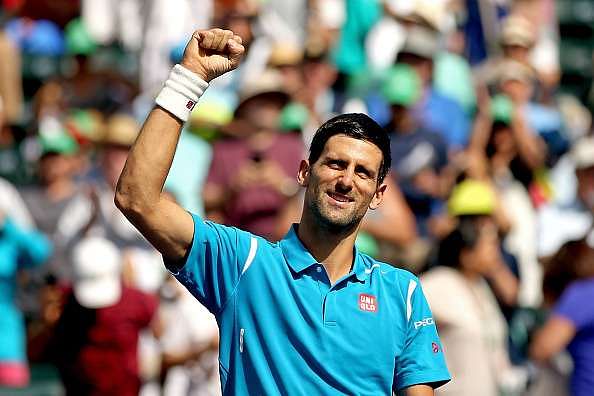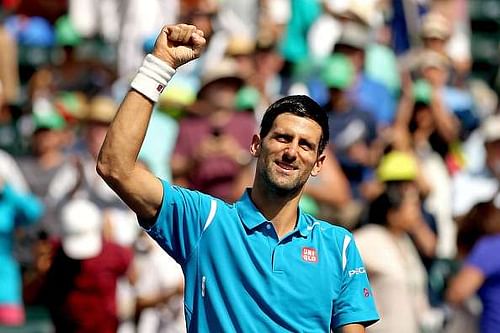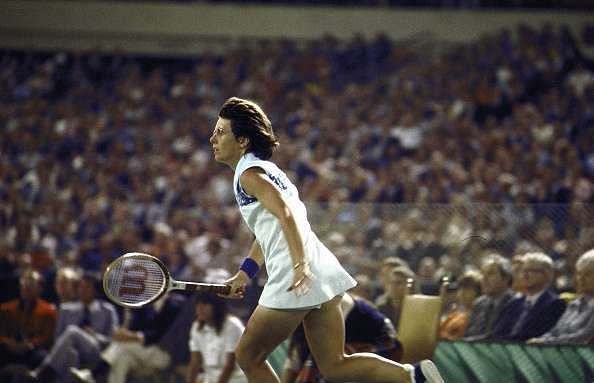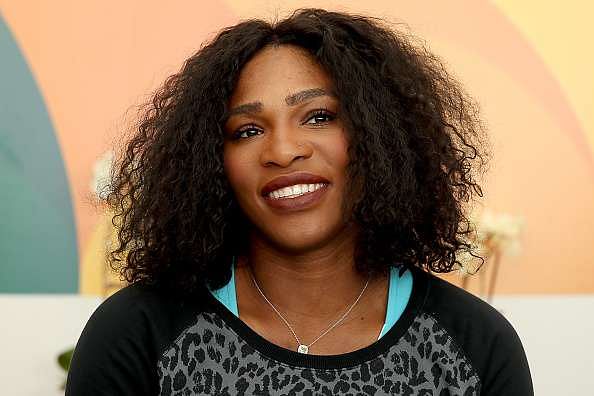
Novak Djokovic's argument about revenue-based payment in tennis merits a closer analysis

Tennis just can’t catch a break this year, can it? First there was the report of suspected match-fixing in the game, which rocked the start of the Australian Open and dominated the conversation far more than the tennis on the court. Then came Maria Sharapova’s explosive revelation that she had tested positive for a banned substance, meldonium, throwing the sport’s moral fabric into question.
And now, the CEO of Indian Wells Raymond Moore has painted women’s tennis in the most unflattering light imaginable, saying that all female players should go down on their knees every night and thank God for Roger Federer and Rafa Nadal.
That is a rather disturbing start to the year for a sport that is trying so hard to become more than a pastime of the elites. Corruption, cheating and now sexism; what’s next – murder? To say that tennis has been in the news for all the wrong reasons this year would be equivalent to saying Virat Kohli likes chasing.
The fall-out of Moore’s comments has been swift and predictable. While the man himself was forced to apologize, and eventually resign from his post, the majority of the tennis world has wasted no time in putting him in his place. Serena Williams called the remarks "very much mistaken and very, very, very inaccurate” (note the triple ‘very’s). Billie Jean King had an equally forceful reaction, tweeting the following:
Disappointed in #RaymondMoore comments. He is wrong on so many levels. Every player, especially the top players, contribute to our success— Billie Jean King (@BillieJeanKing) March 20, 2016
Patrick McEnroe called for his head, and Virginia Wade said all of tennis should be thankful for Federer and Nadal, not just female players. But no one could have put it better than Victoria Azarenka, who beat Serena Williams in the Indian Wells final.
"I'm trying not to think about it. ... I'm not going to bring somebody down. I'm just going to rise above that," Azarenka said. "Why can't we just be happy and enjoy and support each other? Because that's what the world is missing a little bit. It's the support toward each other. Not just bashing and, oh, who is prettier or who is this, who has more, who has less. Let's just take care of each other," she added, displaying rare eloquence and level-headedness amid all the furore.
Whichever way you look at it, Moore’s comments were thoroughly ill-advised and completely at odds with everything that a progressive sport should stand for. He deserves every bit of criticism that is coming his way, and resigning from his post is the bare minimum of the retribution he should face.
His comments also elicited a reaction from the top-ranked male player in the world, and to me that was the most thought-provoking part of this entire episode. Moore’s comments were abhorrent, and should be given the treatment that they deserve – that is, they should be relegated to the rubbish bin. But when Novak Djokovic weighs in on the issue of gender-specific pay in sport, we ought to take notice.
For the record, these were Djokovic’s exact words: “Obviously it’s a very delicate situation. Women deserve respect and admiration for what they are doing. You know, equal prize money was the main subject of the tennis world in the last seven, eight years. I have been through that process as well so I understand how much power and energy WTA and all the advocates for equal prize money have invested in order to reach that.
“I applaud them for that, I honestly do. They fought for what they deserve and they got it. On the other hand I think that our men’s tennis world, ATP world, should fight for more because the stats are showing that we have much more spectators on the men’s tennis matches. I think that’s one of the reasons why maybe we should get awarded more. Women should fight for what they think they deserve and we should fight for what we think we deserve.
“As long as it’s like that and there is data and stats available upon who attracts more attention, spectators, who sells more tickets and stuff like that, in relation to that it has to be fairly distributed.”
The word that instantly leaps out at you from this quote is ‘more’. Djokovic is not unhappy that the women are getting paid a lot of money these days, but he feels the men deserve ‘more’. That’s because they have ‘much more spectators’ and, by extension, draw higher revenue.
A perfectly reasonable comment? You wouldn’t think so judging from the storm of indignant reactions that Djokovic has inspired the last two days. While some have made the mistake of lumping the Serb together with Moore (which is unfortunate but inevitable given how closely timed their comments were), others have sharpened their knives towards the Serb in isolation, contending that a World No. 1 should know better than to make such irresponsible statements.
But are we being blinded by political correctness here? Let us examine all the arguments against equal pay, one by one:
Argument #1: Women can never defeat men on the court
I must confess I couldn’t quite believe my ears when I first heard this argument. Are we really so thick-headed that we’ll demand men and women to play against each other to determine who deserves more money?
It’s not rocket science that men would always have the edge over women, assuming they are roughly at the same skill level. The two genders have vastly differing physiques that are not designed to compete against each other. The odd ‘Battle of the Sexes’ notwithstanding, this is a no-brainer: you can’t expect a woman to defeat a man at the very top level of tennis.

But why should a woman defeat a man to prove her point at all? Men’s tennis and women’s tennis are two different sports, that have completely different fundamentals. Asking a male tennis player to compete against a female tennis player is like asking a tennis player to play a match against a cricketer.
Different sports do not belong on the same court together, so I can’t quite comprehend how this argument ever gained any steam at all.
Argument #2: The level of competition is higher in men’s tennis than women’s tennis
This is a bit of a grey area. We've all seen the ease with which Serena Williams has been dominating the women's game in recent times, and total chaos on the tour whenever she's absent. Just last month, with the World No. 1 out of commisison, two of the biggest women's tournaments of the year outside the Slams – Doha and Dubai – had finals which featured Jelena Ostapenko, Barbora Strycova, Sara Errani and Carla Suarez Navarro.
The men's game by contrast is far more familiar. Even when Djokovic, Federer or Nadal are absent from a tournament or get knocked out early, there are other stars like Andy Murray, Stan Wawrinka and Kei Nishikori to take up the mantle and continue showcasing the highest quality tennis.
The prevailing wisdom is that it’s a lot easier to dominate women’s tennis than men’s tennis. Just look at the Slam tally record on the two tours – for the men it’s just 17, but for the women it’s 24. There have been many female teenage phenoms who have won multiple Slams before turning 20, but that’s much rarer to see among the men.
But this is not a foolproof argument, because women’s tennis hasn’t always been as chaotic as it is today. At the start of the 2000s, we had the Williams sisters, Martina Hingis, Lindsay Davenport, Jennifer Capriati, Justin Henin, Kim Clijsters and Monica Seles all competing at the same time. The men’s game on the other hand suffered arguably its weakest phase of the Open Era at that time, with Lleyton Hewitt finishing as World No. 1 two years in a row as Pete Sampras underwent a slow and painful decline.
So who’s to say the script won’t be flipped again in the future? For now men’s tennis is more competitive than women’s tennis, but there’s no guarantee that it will remain that way forever. It doesn’t make much sense, then, to decide on something as important as prize money on the prevailing conditions of a short period of time (and a period which, may I add, has widely been considered the ‘Golden Age’ of men’s tennis history).
Argument #3: Men play best-of-five at the Slams as opposed to best-of-three by the women
This is the most commonly trotted out argument, and one that looks at the issue from the ground up. When the women don't exert as much time or energy as the men on the court, why should they get paid the same amount?
This is hard to repudiate, because it's just so simplistic – with equal pay, a reward vs effort graph would always make the men look hard done by. But are athletes in any sport really paid for the amount of physical effort they put in?
Golf is possibly the most 'leisurely’ of all high-profile sports (if you can even call golf a sport), and yet golfers are among the highest paid sportspersons in the world. Studies have also shown that racquet sports like squash and badminton require more stamina and energy than most other sports, but the prize money in these games is nowhere close to that in football or cricket.
So if the women don't put in as many hard yards as the men at the Grand Slams, should they really be penalized for that? In my book, they shouldn't. Prize money is not a function of energy expended, and that’s just as it should be.
Argument #4: Men’s tennis generates higher revenue than women’s tennis
This forms the crux of Djokovic’s comments, which has led to so much gnashing of teeth over the last two days. But practically speaking, can this line of thought really be countered by cold hard facts?
Andy Murray put out some strong words yesterday; everyone was waiting for him, a self-confessed feminist, to have a say about the issue, and he didn’t disappoint.
“One of the things Novak said was that if women are selling more seats and tickets they should make more but at a tournament like this, for example, if Serena is playing on centre court and you have a men’s match with Stakhovsky playing, people are coming to watch Serena," Murray said. “The crowds are coming to watch the women as well,” he added.
But are they really, Andy? Last year’s Wimbledon figures state that the men’s final drew more than twice the television viewers than the women’s final. While ratings at the US Open have occasionally skewed in favour of the women the last decade due to the presence of the Williams sisters, the half-empty stands we regularly see at women’s matches everywhere else are a clear indication of this simple fact: more people watch men’s tennis than women’s tennis.
Yes, there are one-offs. And sure, if Serena is playing Azarenka on one court and Stakhovsky is playing Gabashvili on the other, the Serena match would get a larger crowd. But can anyone say with conviction that if a men’s match and a women’s match were going on at the same time, and the identities of the four players were unknown, the same number of people would flock to each court?

Serena is an exception, and maybe Sharapova too; but the rest of the women’s tour doesn’t hold a candle to the men’s roster in terms of popularity. Casual fans may be equally clueless about the abilities of 14th-ranked Dominic Thiem and 14th-ranked Karolina Pliskova, but there would always more spectators to watch Thiem take on the 15th-ranked David Goffin than Pliskova taking on 15th-ranked Lucie Safarova.
I’m not just taking refuge in this specific comparison to serve my argument. Even if the biggest women’s stars – Serena and Sharapova – play at the same time as Federer and Nadal, I’m willing to bet that the Federer match would get considerably higher attendance and TV ratings than the Serena one.
There is also a contention that the men’s players are not all equally popular; since we don’t see the more popular players getting higher pay than the less popular ones, there should not be a difference in the pay of men and women. But all male players compete on a level playing field, while men and women do not – that changes everything. Also, paying any one player more than others just because he’s more popular would necessitate a highly subjective and complicated mechanism that wouldn’t be acceptable to even the biggest stars.
And here’s another important aspect to consider: people don’t pay more to watch Federer win; they pay more to watch any match that features him. If it so happens that he loses to the least popular player on the tour, that other player would have given the spectators their money’s worth in full.
Serena has tried to make the issue about gender equality, as have many others. “I have been playing since the age of two and it would be shocking to say my son would deserve more than my daughter. It is irrelevant. Novak is entitled to his opinion but if he has a daughter – I think he has a son right now – he should talk to her and tell her how his son deserves more money because he is a boy. It all boils down to that. I would never put a sex against another sex,” Serena has been quoted as saying.
But this isn’t about gender equality; it never has been. It’s about business, and that vulgar little thing called ‘return on investment’. Djokovic’s son would earn more than Djokovic’s future daughter not because he’s a boy; he would earn more because people would be willing to pay higher to watch him play than his sister.
The tennis governing bodies are businesses at the end of the day, not philanthropic organizations. They have to look out for what’s in their best interest, even if that means appearing sexist and discriminatory to the casual observer.
The revenue factor is the strongest argument against equal pay for men and women, and in a capitalist environment, an arguably irrefutable one.
Djokovic did tender an apology for his comments today, posting on his Facebook page that he “made some comments that were not the best articulation of his view”, and that he wants to apologize to anyone who has taken his comments “in the wrong way”.
But he didn’t stop at that. “We all have to fight for what we deserve. This was never meant to be made into a fight between genders and differences in pay, but in the way all players are rewarded for their play and effort,” he went on.
Is that really a retraction of his earlier comments? The Serb merely seems to be reiterating his stance about everyone having to fight for what they deserve. And note that even after the storm that his comments have kicked up, he refrained from saying that women should be paid the same as men.
And he shouldn’t have had to say so either. Djokovic has merely expressed, both today and on Sunday, what any businessman would think: that payouts are intrinsically linked to revenues.
Tennis may not have had the best couple of months for its image, but it’s reassuring to know that its best player is willing to stick his neck out and make a stand, no matter how much opposition he may face. Novak Djokovic continues to be tennis’ best ambassador, both on and off the court.